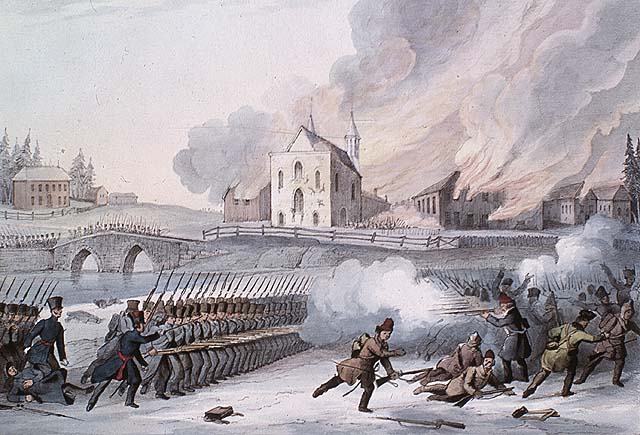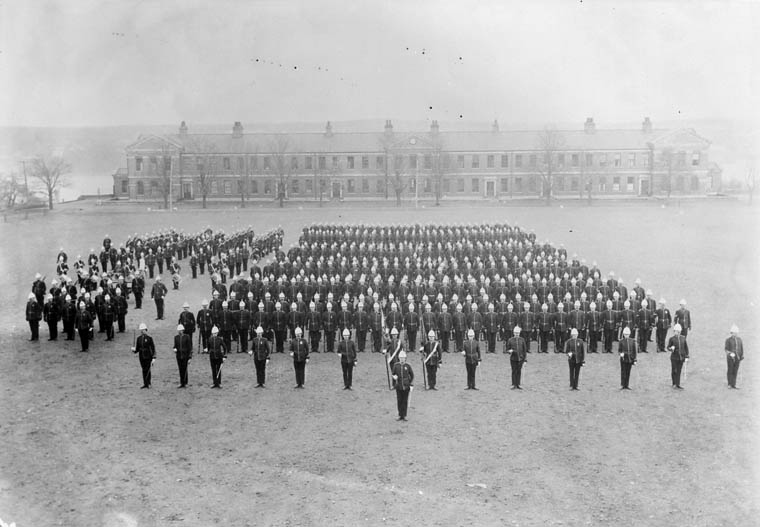Article
RCAF Blackouts
RCAF Blackouts. Entertainment troupe, one of several organized during World War II by air force personnel.

Enter your search term
Signing up enhances your TCE experience with the ability to save items to your personal reading list, and access the interactive map.
Create AccountArticle
RCAF Blackouts. Entertainment troupe, one of several organized during World War II by air force personnel.
"https://www.thecanadianencyclopedia.ca/images/tce_placeholder.jpg?v=e9dca980c9bdb3aa11e832e7ea94f5d9" // resources/views/front/categories/view.blade.phphttps://www.thecanadianencyclopedia.ca/images/tce_placeholder.jpg?v=e9dca980c9bdb3aa11e832e7ea94f5d9

Article
Members of the Women’s Division (WD) of the Royal Canadian Air Force (RCAF) were wartime pioneers. Thousands of young Canadian women volunteered to serve at home and abroad during the Second World War as part of the air force. By replacing men in aviation support roles, they lived up to their motto — "We Serve that Men May Fly” — and, through their record of service and sacrifice, ensured themselves a place in Canadian history.
"https://d3d0lqu00lnqvz.cloudfront.net/7ac67f20-60f1-4812-b162-7c429e5e8950.jpg" // resources/views/front/categories/view.blade.phphttps://d3d0lqu00lnqvz.cloudfront.net/7ac67f20-60f1-4812-b162-7c429e5e8950.jpg

Article
In 1837 and 1838, French Canadian militants in Lower Canada took up arms against the British Crown in a pair of insurrections. The twin rebellions killed more than 300 people. They followed years of tensions between the colony’s anglophone minority and the growing, nationalistic aspirations of its francophone majority. The rebels failed in their campaign against British rule. However, their revolt led to political reform, including the unified Province of Canada and the introduction of responsible government. The rebellion in Lower Canada, which is also known as the Patriots' War (la Guerre des patriotes), also gave French Canadians one of their first nationalist heroes in Louis-Joseph Papineau.
"https://d3d0lqu00lnqvz.cloudfront.net/media/media/37aadc48-3f88-4946-a9aa-0d2ad30495cd.jpg" // resources/views/front/categories/view.blade.phphttps://d3d0lqu00lnqvz.cloudfront.net/media/media/37aadc48-3f88-4946-a9aa-0d2ad30495cd.jpg

Article
The 1837 rebellion in Upper Canada was a less violent, more limited affair than the uprising earlier that year in Lower Canada. However, its leaders, including William Lyon Mackenzie, were equally serious in their demands. They wanted democratic reform and an end to the rule of a privileged oligarchy. The rebellion itself failed, but its very failure helped pave the way for moderate and careful political change in British North America. This included the union of Upper and Lower Canada into the Province of Canada and the eventual introduction of responsible government.
"https://d3d0lqu00lnqvz.cloudfront.net/media/media/e89570fd-5967-4c63-906b-bfbfab2e39fb.jpg" // resources/views/front/categories/view.blade.phphttps://d3d0lqu00lnqvz.cloudfront.net/media/media/e89570fd-5967-4c63-906b-bfbfab2e39fb.jpg

Article
A regiment is a body of troops composed of squadrons, batteries or companies; it is often divided into battalions for military operations. A single-battalion regiment ranges in size from 300 to 1,000.
"https://d3d0lqu00lnqvz.cloudfront.net/CAF/RCR_1907.jpg" // resources/views/front/categories/view.blade.phphttps://d3d0lqu00lnqvz.cloudfront.net/CAF/RCR_1907.jpg

Article
On 6 June 1944, Canadian Forces landed on Juno Beach. D-Day was the largest amphibious invasion of all time and marked the beginning of the end of the Second World War. In 2019, Historica Canada released a Heritage Minute telling the story of 47-year-old Major Archie MacNaughton, a First World War veteran and leader of the North Shore New Brunswick Regiment’s A Company. In this article, Anthony Wilson-Smith, president of Historica Canada, reflects on the making of the D-Day Minute.
"https://d3d0lqu00lnqvz.cloudfront.net/media/new_article_images/ArchieMacNaughton/IMG_2847.JPG" // resources/views/front/categories/view.blade.phphttps://d3d0lqu00lnqvz.cloudfront.net/media/new_article_images/ArchieMacNaughton/IMG_2847.JPG

Article
The red poppy is a symbol of Remembrance Day that was inspired by the poem “In Flanders Fields,” written by Lieutenant-Colonel John McCrae. Canada officially adopted the poppy as a symbol of remembrance in 1921. Red poppy pins are sold by the Royal Canadian Legion and worn by millions of Canadians in the weeks leading up to and on 11 November.
"https://d3d0lqu00lnqvz.cloudfront.net/media/media/064a5591-1989-4fac-b81e-7bd9099c8053.jpg" // resources/views/front/categories/view.blade.phphttps://d3d0lqu00lnqvz.cloudfront.net/media/media/064a5591-1989-4fac-b81e-7bd9099c8053.jpg

Article
While they may not have had access to the battlefields, a number of Canadian women artists made their mark on the visual culture of the First World War by representing the home front. First among these were the women affiliated with the Canadian War Memorials Fund, Canada’s first official war art program. Founded in 1916, the stated goal of the Fund was to provide “suitable Memorials in the form of Tablets, Oil-Paintings, etc. […], to the Canadian Heroes and Heroines in the War.” Expatriates Florence Carlyle and Caroline Armington participated in the program while overseas. Artists Henrietta Mabel May, Dorothy Stevens, Frances Loringand Florence Wyle were commissioned by the Fund to visually document the war effort in Canada.
"https://d3d0lqu00lnqvz.cloudfront.net/media/media/c5bd4814-1974-4a38-b0bf-006c4ec26687.jpg" // resources/views/front/categories/view.blade.phphttps://d3d0lqu00lnqvz.cloudfront.net/media/media/c5bd4814-1974-4a38-b0bf-006c4ec26687.jpg

Article
The Reserve Force of Canada comprises part-time members of the ARMED FORCES, whose role is to augment and support the Regular Force. Compulsory universal military service for early settlers eventually became part-time, volunteer soldiering.
"https://www.thecanadianencyclopedia.ca/images/tce_placeholder.jpg?v=e9dca980c9bdb3aa11e832e7ea94f5d9" // resources/views/front/categories/view.blade.phphttps://www.thecanadianencyclopedia.ca/images/tce_placeholder.jpg?v=e9dca980c9bdb3aa11e832e7ea94f5d9

Article
In the early 20th Century, the Ross rifle, a Canadian-made infantry rifle, was produced as an alternative to the British-made Lee-Enfield rifle. The Ross rifle was used during the First World War, where it gained a reputation as an unreliable weapon among Canadian soldiers. By 1916, the Ross had been mostly replaced by the Lee-Enfield.
"https://d3d0lqu00lnqvz.cloudfront.net/media/single_use_images/Ross_rifle.jpeg" // resources/views/front/categories/view.blade.phphttps://d3d0lqu00lnqvz.cloudfront.net/media/single_use_images/Ross_rifle.jpeg

Article
Since its inception in 1924, the Royal Canadian Air Force (RCAF) has served Canadians in peace and war. It played a vital role in the Second World War, becoming the fourth-largest Allied air force, and reached its "golden age" in the late 1950s, with dozens of combat squadrons on the front lines of the Cold War. The term Royal, dropped from the name in 1968, was returned to the air force in 2011.
"https://d3d0lqu00lnqvz.cloudfront.net/media/media/f864cf51-65b5-4803-85a1-a7908ffdc0aa.jpg" // resources/views/front/categories/view.blade.phphttps://d3d0lqu00lnqvz.cloudfront.net/media/media/f864cf51-65b5-4803-85a1-a7908ffdc0aa.jpg

Collection
On 1 April 2024, the Royal Canadian Air Force (RCAF) will mark its 100th anniversary. Canada didn't have its own air force during the First World War, although more than 20,000 Canadians served in a British Empire flying service. After the war, Canada established an Air Board to develop aviation policy, leading to a Canadian Air Force or “flying militia” that used wartime flyers and surplus British aircraft. On 1 April 1924, the air service...
"https://d3d0lqu00lnqvz.cloudfront.net/media/media/6a823326-afa8-474e-a4e7-8b72b9a5dd53.jpg" // resources/views/front/categories/view.blade.phphttps://d3d0lqu00lnqvz.cloudfront.net/media/media/6a823326-afa8-474e-a4e7-8b72b9a5dd53.jpg

Article
The Royal Canadian Legion is a non-profit, national organization that serves Canadian war veterans and their families and lobbies government on their behalf. It is best known for selling poppies every fall and organizing Remembrance Day ceremonies across the country. In recent decades, the Legion has struggled with declining membership, due in large part to the loss of Second World War and Korean War veterans.
"https://d3d0lqu00lnqvz.cloudfront.net/media/media/c8863b07-985b-49e7-aa96-3ee336735d4d.jpg" // resources/views/front/categories/view.blade.phphttps://d3d0lqu00lnqvz.cloudfront.net/media/media/c8863b07-985b-49e7-aa96-3ee336735d4d.jpg

Article
The Royal Canadian Naval Air Branch was established in 1945 and disbanded upon unification of the Canadian Armed Forces in 1968. During that period, the Royal Canadian Navy (RCN) operated a succession of three aircraft carriers: HMC Ships Warrior, Magnificent and Bonaventure. The ability to exercise air power at sea was fundamental to the RCN’s core role of anti-submarine warfare (ASW) against the Cold War Soviet submarine fleet. As the nature of that threat evolved, the RCN Air Branch underwent a nearly continuous process of adaptation to incorporate new equipment and tactics, with increasingly higher performance aircraft and supporting equipment.
"https://d3d0lqu00lnqvz.cloudfront.net/RCNAirBranch/Bonaventure_-_Banshees.jpg" // resources/views/front/categories/view.blade.phphttps://d3d0lqu00lnqvz.cloudfront.net/RCNAirBranch/Bonaventure_-_Banshees.jpg

Article
The Royal Canadian Naval Air Service (RCNAS) was formed during the closing months of the First World War to help counter the German U-boat threat on Canada’s East Coast. It was disbanded after only three months of existence. A Canadian naval air service was not created again until after the Second World War.
"https://d3d0lqu00lnqvz.cloudfront.net/RCNAS/HS-2L-1876.jpg" // resources/views/front/categories/view.blade.phphttps://d3d0lqu00lnqvz.cloudfront.net/RCNAS/HS-2L-1876.jpg
